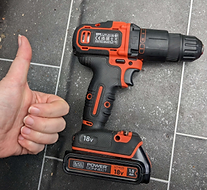


Air Bee 'n Bee
Project is OPEN for 2023
Project updated for 2023
Most species of bee in the UK are solitary and do not live in colonies like bumblebees or honeybees. They are very important pollinators, but tend not to be as well-known about as their social relatives.
Many species nest below the ground ('mining bees'), while others nest in cavities, e.g. in old plant stems, or in walls ('cavity nesting' bees). Females create individual 'cells' inside these tunnels using mud or leaves, into which they lay an egg. Each cell is then packed full of pollen, providing food for the larvae as it grows over the warm summer months. The offspring hibernate over winter and then chew their way out of the nest and emerge as adults around April/May.
Making bee hotels to support solitary bees is a popular wildlife gardening intervention. These typically provide tubes / holes suitable for cavity nesting solitary bees, which would naturally use e.g. old plant stems or cracking wood to nest in. Our management of green spaces often removes / tidies away a lot of their potential nesting sites, so providing bee hotels aims to readdress this balance.
Name: Air Bee & Bee
Year(s): 2022 -
Focus? Solitary bees
Status? Open
Results? Awaiting data
Project summary

Note: If you remember a project with this title from a few years ago - you're right. An MSc project based at Sussex was run in association with the Buzz Club, and project lead Xavier McNally produced a fantastic guide to solitary bee habitats, which you can find here.
We are now expanding the projects under this name, since we get so many enquiries about solitary bees. It's time to bring back the Bee & Bee! 🐝🏡📋🐝

There is huge variation in bee hotel designs out there!.
The Project
One of the Buzz Club's main goals is to look at wildlife gardening activities with a scientific eye; testing out what really works, and what needs adjusting for the complexity of real garden environments. We often get asked questions about bee hotels, such as what are the 'best' type, where to keep them, whether to clean them or not, and so on. We also know that in general 'bee hotels' do work (i.e. bees use them), but there is so much variation in the types of hotels available, it is difficult to give more than quite general recommendations.
In 2022 we asked Buzz Club members to characterise the bee hotels they already had (or used to hvae), in terms of the hole sizes, depths, material used and other factors. This year we are going to investigate the effects of using different sizes of holes in bee hotels. Do we get the same visitors, regardless of room size? Do some residents have specific requirements – or are they willing to compromise?
One size fits... all? (2023)
Typically, advice for making (or designing) bee hotels suggests providing holes of about 8mm in diameter. This is a size known to be used by mason bees (a common visitor), but may not be as appealing to other species that are physically smaller or larger.
Since there are a lot of potential factors that might influence which bees use a bee hotel, we are going to try and keep characteristics of the project hotels as similar as possible, other than the hole size. This means we have decided to use drilled wooden blocks in this project, as e.g. one 8mm drill hole is likely to be more like another, than pieces of bamboo cane or other more natural (and variable) material.
To take part in this project, you will need access to a drill; some wood thick enough to drill tunnels into (and not go through the back); and somewhere to put a bee hotel (e.g. a sunny spot, at least a metre off the ground, where you can firmy attach the hotel).
The project will take place from April - September and can be joined at any time; although many species of solitary bees are most active in spring, so the sooner the better.

Equipment
1) A drill, suitable for drilling holes into wood.
2) Drill bits of 10 mm, 9 mm, 8 mm, 7 mm and 6 mm in diameter*.
(*you need at least an 8 mm, and some others to compare to. See 'variations' in the protocol for more information))
3) Wood. Enough to drill at least 25 holes in, without going through the back
(e.g. thicker than the length of your drill bits) . Multiple pieces are okay.
4) Sandpaper / file (to smooth the holes)
5) Pencil / ruler for marking positions.
6) Something to randomise the assigning of hole sizes.



Making the hotels
The instructions give much more detail on setting up your hotel(s). In summary:
1) Mark out a grid onto the wood, with points at least 2cm apart (so you don't run the risk of drilling through one tunnel into another, particularly with the larger sizes).
2) Randomise which sized holes will go where, and label them so you know which is which.
3) Drill the holes. Try not to go through the back of the wood (block it up if you do).
4) Install your bee hotel somewhere sunny, 1 - 2m off the ground, and fixed securely in place.
5) Keep an eye on any visitor activity in the hotel, and record details on the provided recording sheet.
Dave's 2022 pilot project
This year's project is based on a pilot project that Dave did in 2022. We discussed some of his findings in our latest newsletter - but if you would like to see the full story, check out his videos below: